
1558267200000
The Best Ways to Travel from Hong Kong to Guangzhou
What is the best way to travel from Hong Kong to Guangzhou - Here are the 4 best!
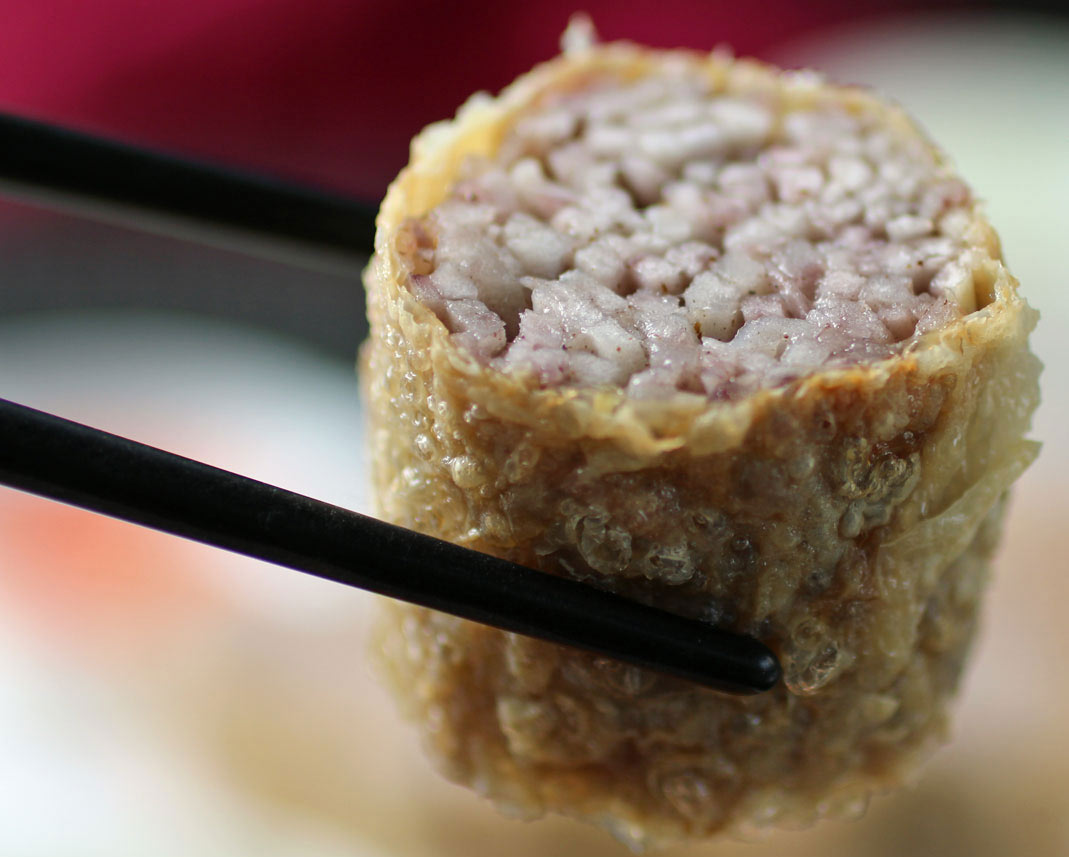
1557748800000
Where to find the Best Dim Sum in Guangzhou
In Guangzhou you are spoilt for choice when in comes to Dim Sum. With a mixture of both traditional and contemporary varieties, fresh ingredients and highly skilled chefs, you will find quality and diversity that far exceeds other cities.
Here is a list of our favourite places for Yum Cha in Guangzhou!
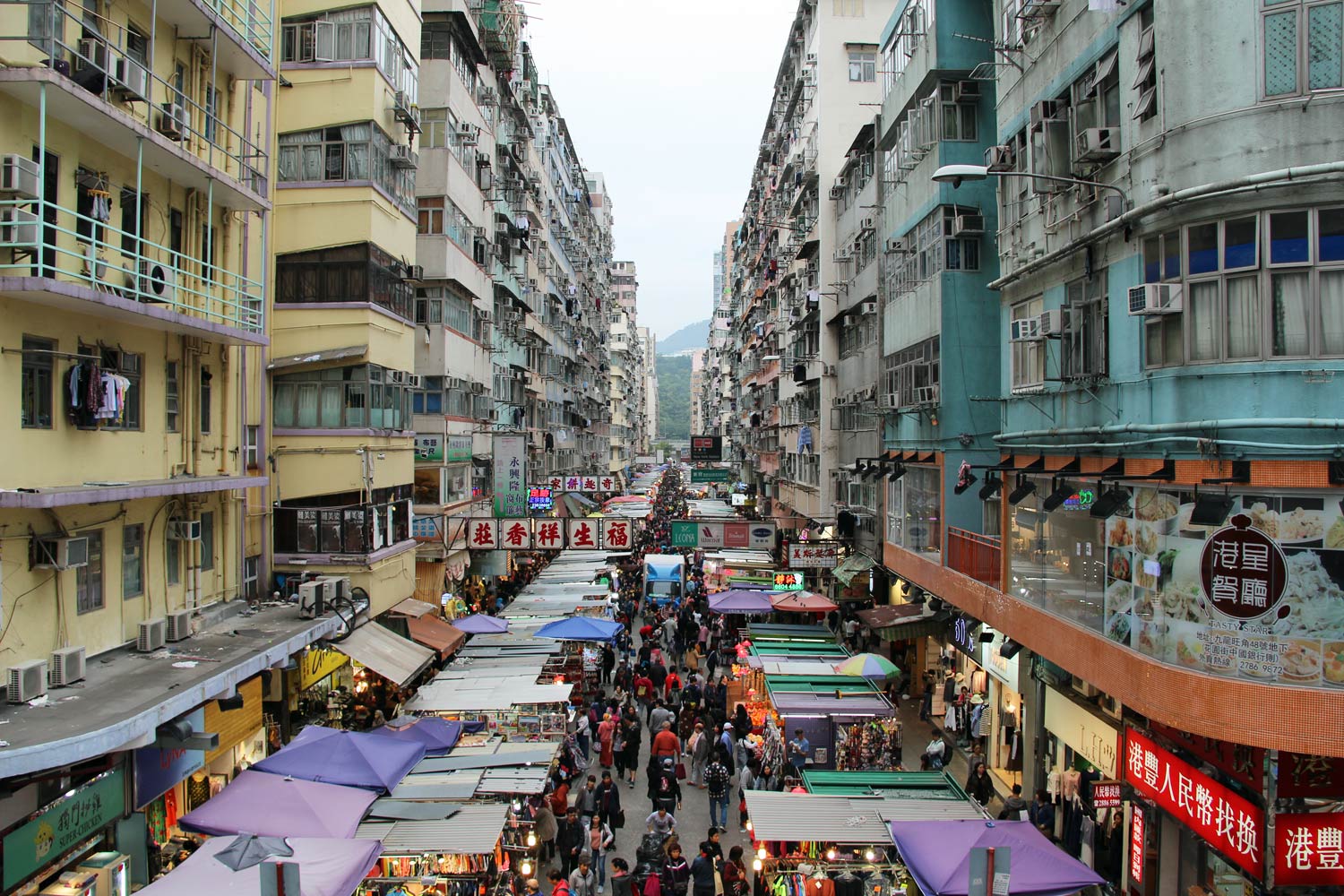
1524147188000
Things to do in Mongkok | An Insiders Guide
Mongkok, insanely overcrowded, humid as hell and full of great things to do. For shoppers, Mongkok has both luxury malls and street markets. For foodies, Mongkok may be the highlight of your trip to Hong Kong with abundant street food, desserts and local eateries. Enjoy our insiders guide to Mongkok.

1503466234000
Hong Kong Street Eats | The best Street Food in Hong Kong
Cantonese people love to eat, and Hong Kongs street food reflects that. With a mixture of traditional cantonese snacks and contemporary delicacies, the street food is so good that the Michelin guide for Hong Kong included a street food category since 2016. Whilst in the 1950s & 60s Hong Kong streets were studded with street food hawkers selling from carts, today you are more likely to find your favourite street food being sold from small shops and stands on street corners. Take yourself on your own eating adventure around Hong Kong sampling some of the snacks below, or join one of our Hong Kong food tours. Egg Waffles (Gai Daan Zai)Gai daan zai, or Egg Waffles are one of the most popular Hong Kong street snacks. Made from a batter of egg, wheat flour, evaporated milk, and sugar, these are a locals favourite. You’ll encounter its sweet, tempting scent often as you wander the city streets.Besides the traditional flavour egg waffle, you can now find all sorts of modern variations including Pandan and Chocolate flavours, or served with ice cream, and even our favourite, peanut butter with condensed milk!Where to find Hong Kong Egg Waffles? It is easy to find gai daan zai in Hong Kong, but lots of it will be soft, soggy or not tasty. If you want to try one of the best versions in the city, head to Lei Kung Kee (492 Kings Rd., North Point), a hole-in-the-wall near North Point MTR. Expect long queues in the afternoon. Dao fu faDao fu fa is a popular snack in Hong Kong. Made from coagulated soybean milk—essentially very soft tofu—it can be eaten hot or cold and is normally served with a sweet sugar or ginger syrup. Sometimes it is also served with fruit or mixed with black sesame paste. Good-quality dao fu fa should be soft and silky-smooth.Where to try dao fu fa? The tofu at A1 Tofu Company (103 Kweilin St., Sham Shui Po, Kowloon, Hong Kong) is made from organic Canadian soybeans, and is known for having exceptionally great texture. Pig Intestines (Ja Zu Da Cheung)Pig Intestines. Doesn’t the name just make you salivate? Probably not, but this is a popular street snack in Hong Kong. It is a labour intensive and time consuming process to prepare these intestines. First they need to be cleaned with salt and flour, boiled for an hour, coat with malt sugar and dry for 3 hours before putting them in the deep-fryer. You can hide the flavour with some mustard or hoisin sauce. The intestines themselves are a bit chewy, in some ways like squid. Just hope that your intestines were cleaned properly before being deep fried!You can find pig intestines at any of the street snack stalls that you find scattered around Hong Kong. Try Mongkok or Sham Shui Po for your culinary adventure. Curry Fish Balls (Ga Lei Yu Dan)Curry fish balls is one of the best known Hong Kong Street Foods, and can be found throughout the city. In Cantonese these are literally called “Fish Eggs”, and are 5 – 7 small balls of minced fish mixed with flour and boiled in a spicy curry sauce. Served on a bamboo skewer, they are cheap, flavoursome and easy to find. These are so popular that you can even buy them at 7-eleven. If you are interested in trying Curry Fish Balls, this Hong Kong street snack that has been a staple over the generations is one of the tastings on our Kowloon Food Tour.Where to try it Hong Kong curry fish balls?The best is from Lam Kee hidden in Hung Hom Cha Kwun Lei. They have been around for many years and expect long queues during lunch and after school hours. Their old-styled traditional sauce made from oyster sauce, dark soy sauce, star anise and curry. HKD$7 for 6 fish balls. Stinky Tofu (Cau Dou Fu)Stinky tofu is fermented tofu that can be found as a street food in Hong Kong. This weird food has its origins in mainland China, but can also be found in Hong Kong and Taiwan. The Taiwanese are especially fond of this pungent food, serving more varieties than you can find in Hong Kong.The stink in the stinky tofu is from a fermented brine made from fermented milk, vegetables, meat and shrimp. Fresh tofu is immersed in the brine for a day or two to get its flavour. The smell of stinky tofu is quite overpowering. It reminds me of the open sewers in Africa. You will need to overcome your natural instinct not to eat food with a rotten smell to try this snack.In Hong Kong stinky tofu is normally deep fried and served with hoisin sauce. In the past, stinky tofu was sold in street carts in busy areas like Mong Kok. Nowadays, you can find them in these little street side snack food shops dotted around the city. Fried Squid (Ja Yao Yu)Who doesn’t like some fried squid? The best fried squids are ones that are lightly battered, deep fried in oil over 180 degrees resulting in really crispy coating and crunchy squid inside. Kai Kei Snack (41 Dundas Street, Mong Kok) is a locals favourite for fried squid. Pineapple Buns (Bo Lo Bao)Pineapple buns are a sweet bun that is popular in Cantonese bakeries around the world. The pineapple buns actually contains no pineapple but got its name from the appearance of the sugary crust on top of the bun which has a pattern like pineapple skin.It may just be a simple bun, but it was listed by the Hong Kong Government as part of Hong Kong’s intangible heritage in 2014.Traditional pineapple buns contain no filling, but common variations include a red bean paste filling, or even real pineapple.Many Hong Kong restaurants, such as , offer an item called a buttered pineapple bun, which is a pineapple bun with a piece of butter stuffed inside. They are known in Cantonese as bo lo yau (菠蘿油), which translates literally to pineapple oil.In our humble opinion though, the best pineapple buns are found across the border in Guangzhou. Try Bing Sheng for their famous oversized buns with a pineapple filling.In Hong Kong we recommend Kam Wah Restaurant (47 Buke Street, Mongkok), their famous hot Bo Lo Yau (HKD$10) will live up to your expectations. Crunchy crust, soft bun and butter that melts as soon as you put the bun into your month. Lo Po Bang (Wife Cakes)Lo Po Bang or Wives Cakes is one of the most popular traditional pastries in Hong Kong. Originating from Guangdong in mainland China. The paste is a sweet mash of wintermelon, sugar and glutinous rice flour. We like our Lo Po Bang to have a good amount of wintermelon inside, the paste should be smooth and the pastry soft and flaky.There is a beautiful legend behind the origins of Lo Po Bang. It is said to have been invented by a man living in a small village in China. His father was terminally ill, and the man and his wife had spent all their money on trying to find a treatment to save the father. In the ultimate self sacrifice, the wife sold herself into slavery to raise more money to save her father in law. After the husband learned of his wife’s actions, he invented Lo Po Bang and sold enough to buy back his wife and save his father.You can find Lo Po Bang in most bakeries in Hong Kong, however the quality varies enormously and some to be honest are unpalatable.To try some great Lo Po Bang in Hong Kong, head out to Hang Heung Cake Shop in Yuen Long, 66 Castle Peak Road, Yuen Long, Hong Kong Lo Mai Chi (Glutinious Rice Balls)Lo Mai Chi are sweet glutinous rice ball. They sometimes have dried coconut on the outside and can be made from a variety of fillings including red bean paste, mango and durian. There are also more modern varieties with chocolate fillings.In Hong Kong you will find small speciality shops that sell freshly made Lo Mai Chi. The English name for these is often written as Nuomici, which Mandarin, not Cantonese.Lo Mai Chi are similar to Japanese Mochi, but the glutinous rice is softer and more sticky.Cheung Chau, one of the outlying island of Hong Kong is famous for Lo Mai Chi. Yong Xing Dessert place (3 Sun Hing Street, Cheung Chau) makes one of the best mango lo mai chi. Dragon Beard Candy (Long So Tong)Dragon beard candy is a traditional Chinese candy that you can find in Hong Kong. It is similar to fairy floss. The process of making the candy is often used by street sellers to attract customers, as the art of making it is in itself eye-catching. Dragon beard candy has a history of more than 2000 years in China. In the past, royal chefs in China would give a performance on how to make dragon beard candy in front of guests and serve them afterwards.Made primarily from maltose and sugar, after stretching the strands are rolled around peanuts, sesame seads, it has a stringy appearance with a rich sweet flavour and will melt on your tongue.The candy is best eaten freshly made and will quickly melt in warmer weather.Where to find Dragon Beard Candy?Dragon beard candy is not easy to find. You might be lucky to stumble upon it at a night market or festival. Otherwise there is a small shop in Sheung Wan near the MTR Exit B that sells it. Look for a Chinese sign with small writing that says “Super Bowl King Traditional Sweets and Desserts” Three Stuffed Treasures (Jin yeung saam bo)Three stuffed treasures is a street snack that has it’s origins in Shunde in Guangdong. You may have actually tried variations of this street snack in dim sum restaurants without even knowing it. Traditional three stuffed treasures comprises bitter melon, long green chili and eggplant. Each is stuffed with fish paste. When you buy this from a street vendor in Hong Kong, there are actually more than 3 varieties to choose from with other options including stuffed tofu, stuffed mushrooms and even sausages, The vendor will stick a piece of each chosen variety on a bamboo skewer and deep fry them. Be wary of food safety if buying this on the street, as it may have been sitting out all day.To try three stuffed treasures, you need to go to a stall that makes them in the original way – deep fried in pork oil. Nowadays, people are very health conscious and will run away as soon as they hear the word “pork oil”. Luckily, there is Dong Hing Snack Food in Stall A4, 43-59 Dai Tsuen Street, Tai Kok Tsui that makes their own pork oil, beat their own fish mince and the smell spreads throughout the whole street. Beef Offal Stew (ngao tsap)Slow cooked beef offal, boiled for hours in a master stock that may have been used for years. Fresh beef is also included in the soup. Our favourite part is the honeycomb tripe, but you will also find small intestines, large intestinese and lungs in this delicious delicacy. Try to find a vendor that includes some white radish, which will soak up the flavour of the soup.In the past is was possible to find this being sold be street vendors in Hong Kong, but with an ever reducing number of street vendors, you are likely going to have to go to a restaurant for this street food.Where to try beef offal stew?Sui Kee 2, Gutzlaff Street, Central, Hong KongThis famous beef offal and beef brisket stew place has been around for more than 60 years. It has been passed down to three generations but owner Li said his only son is not as tough as he is and simply not interested in spending up to 15 hours in the stall. So, enjoy it while you can! Wun Jai Ci – “shark fin” soupIn the 40’s, around Temple Street Yau Ma Tei area, there were street sellers that gathered left over shark fins from restaurants and recooked them in a nice thick soup so that common people can also enjoy shark fins.Due to increased hygiene standards, vendors don’t use leftovers anymore and they have replaced the shark fin with vermicelli. Cooked with black fungus, mushrooms, shredded chicken meat, cured ham, this tasty and filling soup is a great snack to have.Where to try imitation shark fin soup?Bon Bon Cafe92 Ivy Street, Tai Kok Tsui, Hong Kong Boot zai go – steamed glutinous rice pudding Originated from Tai Shan in Guangdong, it is made from brown sugar and glutinous rice flour, steamed in porcelain small bowls, often with red beans inside. In the past these were sometimes served by street vendors skewered on two bamboo sticks.Where to try boot zai go?Kwon Kee, 115-117 Fook Wah Street Sham Shui Po, Hong Kong
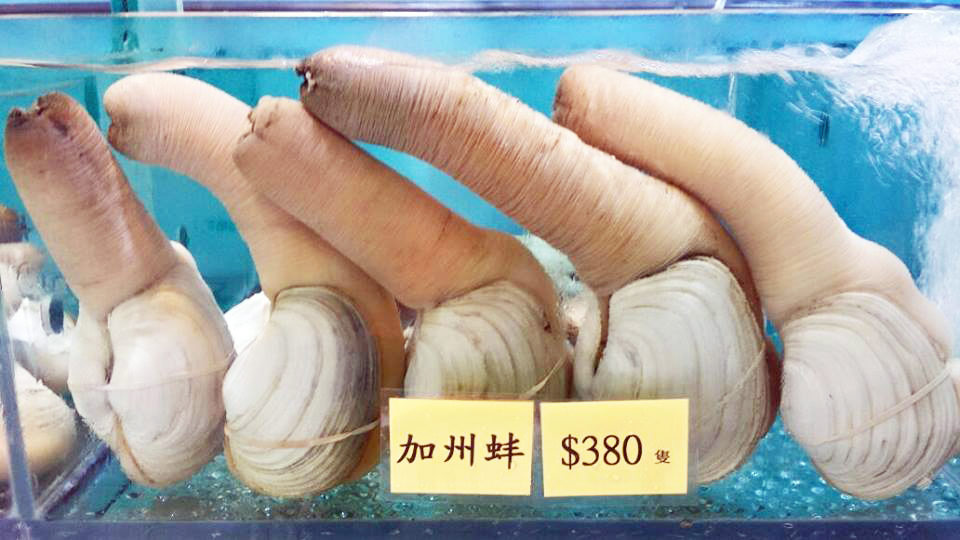
1501583492000
The Ultimate Weird Food Guide to Hong Kong | 15 Weird Eats from the Eating Adventures team
The Eating Adventures team loves exploring Hong Kong to find the weirdest and tastiest food. Here is the our ultimate guide of 15 of the weirdest foods that you can find in Hong Kong. Turtle jelly, snake soup, chicken testicles, geoduck, horse sashimi and more!
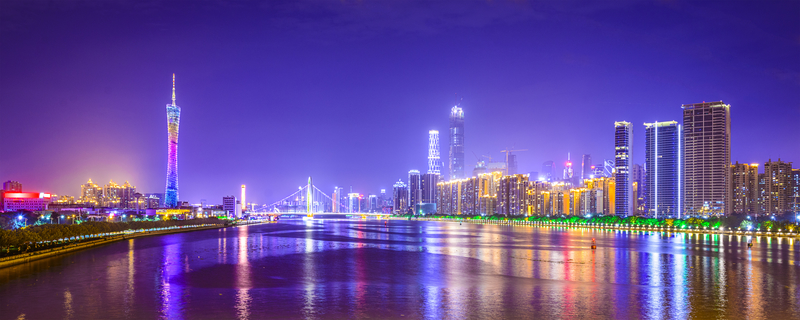
1561347680000
144 hour visa free transit for Guangzhou and Shenzhen
Are you considering a layover in Guangzhou or Shenzhen? Well now you may be able to visit enjoy a visa free transit for up to 144 hours! Starting from 1st May 2019, travellers from 53 countries can transit through Guangdong province, China to a third country or region without buying a Chinese via. You will probably find this most useful for China Southern layovers when flying into Guangzhou or Shenzhen international airports, but the rules are actually a bit more flexible than that. Who is eligible for the 144-hour visa free transit in Guangdong China? Travellers from one of the 53 eligible countries listed below can take a visa free transit in Guangzhou, Zhenshen and the rest of Guangdong province: Schengen area countries: Austria, Belgium, Czech Republic, Denmark, Estonia, Finland, France, Germany, Greece, Hungary, Iceland, Italy, Latvia, Lithuania, Luxembourg, Malta, Netherlands, Poland, Portugal, Slovakia, Slovenia, Spain, Sweden, SwitzerlandOther countries in Europe: Russia, the United Kingdom, Ireland, Cyprus, Bulgaria, Romania, Ukraine, Serbia, Croatia, Bosnia-Herzegovina, Montenegro, Macedonia (FYROM), Albania, Monaco, BelarusNorth and South America: the United States, Canada, Brazil, Mexico, Argentina, ChileOceania: Australia, New ZealandAsia: Korea, Japan, Singapore, BruneiMiddle East: United Arab Emirates, QatarWhere must you enter for a visa free transit in Guangdong, China?You will need to enter from one of the three ports – Guangzhou Baiyun Airport Shenzhen Bao’an Airport Jieyang Chaoshan Airport and importantly, you must hold a confirmed onward ticket to a third country or region. Hong Kong and Macau are considered as third territories. Where must you exit on a visa free transit in Guangdong, China?If you want to get a 144 hour visa free transit for Guangzhou, Shenzhen or anywhere else in Guangdong, China, you will need to exit from one of the 32 designated ports –AirportsGuangzhou Baiyun AirportShenzhen Baoan AirportJieyang Chaoshan AirportMeizhou AirportZhejiang AirportRailway stationsGuangzhou Tianhe – Guangzhou East Railway StationDongguan – Changping Railway StationFoshan – Foshan Railway StationZhaoqing – Zhaoqing Railway StationLand portsShenzhen: Shatoujiao, Wenjindu, Huanggang, Luohu, Shenzhen Bay, Futian Zhuhai: Gongbei, HengqinSea portsGuangzhou: Port of Guangzhou, Nansha Port, Lianhuashan PortShenzhen: Shekou Port, Fuyong Port (in Shenzhen airport)Zhuhai: Jiuzhou Port, Wanzai Port, Wanshan Port, Doumen PortJiangmen: Port of JiangmenHeshan: Port of HeshanFoshan: Gaoming Port, Ronqi Port Zhongshan: Port of Zhongshan Dongguan: Humen Port How does this differ to the previous 72 hour visa free entry?Previously, foreigners from 45 countries were able to get a 72 hour visa free entry. However this was restricted to entering and exiting from Guangzhou Baiyun Airport. How do I apply for the 144-hour Temporary Entry Permit to Guangdong?Upon arrival at the airport, go to Temporary Entry Permit Application counter.Fill in the application form.Present your passport which needs to have more than 3 month validity and a confirmed onward ticket to a third country or region. Please note that both flights must have no stopovers of any kind within Mainland China. Where can I travel on a 144 hour visa free entry and how long can I stay?The 6-day stay starts from midnight the day following the date of arrival. You are allowed to travel anywhere within Guangdong province (this includes, Guangzhou, Shenzhen, Foshan, Dongguan, Zhuhai, Jiangmen, Qingyuan and many smaller cities).Chinese visa rules can change rapidly. Please check with your local Chinese consulate prior to travel. Don't travel without a visa just because we said you could! About Eating AdventuresEating Adventures offers walking food tours in Guangzhou. Explore the backstreets of Guangzhou and gain an appreciation for this fantastic city and its world famous chinese cuisine. Guangzhou tours led by true local licensed tour guides (strictly no expats, no unlicensed guides). All our guides are fluent in Cantonese, the local dialect.If you are looking for inspiration for what to do on a stopover, check out our Guangzhou Travel Guide. Dont forget, you cannot access Google, Facebook and Whatsapp in China, so you might need to purchase a VPN connection prior to travel to get around this. We use Panda VPN.
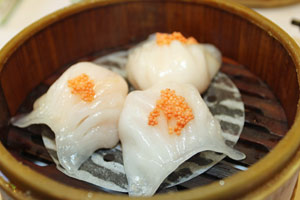

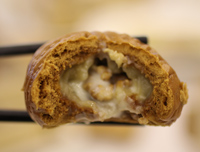
5. Dian Dou De
点都德
Address: Main branch - 587 Long Jin Zhong Lu, Liwan district
总店: 荔湾区龙津中路587号
Beijing Road branch - 470 Hui Fu Dong Lu, Yuexiu district
北京路店:越秀区惠福东路470号
This time-honoured brand was originally established in 1933. The name "Dian dou de" means "everything is possible" which summarises the essence of Cantonese people – easy-going and practical. The current Dian Dou De was revived in recent years by the descendants of the original restaurant. An all day yum cha restaurant, each one of them decorated in traditional Xi Guan style. Their kitchen pumps out up to 108 types of dim sums, with a mix of traditional and creative contemporary options. They believe that “yum cha” is the core of every Cantonese person’s life, a way of living. Their aim is to preserve the dim sum culture at the same time infuse their dim sums with new found creativity. Their four colour ginseng soup prawn dumplings are divine. Other popular dishes include rice paper roll with deep fried dough and prawns inside, and durian desserts. The locals say "you always have to queue but you never leave disappointed".
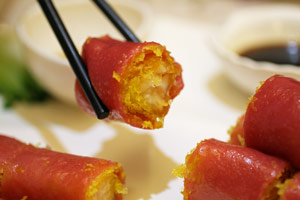

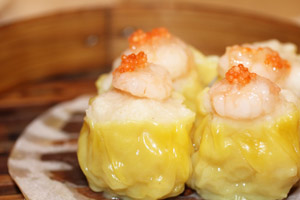
4. Guangzhou restaurant
广州酒家
Original branch - 2 Wen Chang Lu, Liwan district
总店- 荔湾区文昌南路2号
Started in 1935, Guangzhou Restaurant is referred as "The No.1 Place to Eat in Guangzhou". It has also been awarded as one of the top 10 restaurants in China. People say a good way to judge a dim sum restaurant is by the quality of their prawn dumplings and beef balls. They are both outstanding at Guangzhou Restaurant. If you feel like being a royal one day, you can also book in for their banquets where they replicate dishes served to the royals in the past.
6. The Jade River in White Swan Hotel
白天鹅玉堂春暖餐厅
Address: Level 3, White Swan Hotel, No.1 Shamian Street, Liwan
荔湾沙面大街1号白天鹅宾馆3楼
The White Swan Hotel has long been a famous training ground for the top Dim Sum chefs in Guangzhou. This time-honoured restaurant located within the first five-star hotel in Guangzhou specialises in delicately created Dim Sum and Cantonese dishes. It was really no surprise when it was included in the Michelin Guide in 2018. Their dishes are really authentic yet creative at the same time with a strong emphasis on healthy wholesome eating. It comes with a hefty price but it is a once in a lifetime experience.
7. No.5 Tea House
五号茶居
Address: Ground level, Lingnan No.5 Hotel, No. 277 Yanjiang Zhong Lu, No. 5 Hotel
277 号沿江中路岭南五号酒店地层
The new-age No.5 Tea House located within the same named hotel not far from Beijing Road is what makes Guangzhou dining scene so exciting. Their signature dishes incorporate two of the best Cantonese food culture – tea-drinking and slow-cooked soup. Their prawn dumpling is served inside a tea cup together with a pot of high grade tea which is to be poured over the dumpling to have together. They also have a series of black truffle dim sum dishes including black truffle mushroom buns, shao mai (which is pork and prawn dumplings) and wonton. The same attention has been put into the level of service and the interior decoration.
8. Heyuan Restaurant
和苑酒家
Address: L3-5, Times Square, No.410 Dongfeng Zhong Lu, Yuexiu
越秀区东风中路410号时代地产中心3-5楼
Top quality Cantonese Dim Sum served in upmarket décor, Heyuan will definitely give you a memorable dining experience. They are famous for their prawn dumplings and chicken feet. Their lavender almond bun and soufflé is also divine.
9. Yin Deng Restaurant
银灯食府
Address: 3/F Guangzhou Hotel, 2 Qi Yi Road (near Haizhu Square Metro Station Exit E)
起义路2号广州宾馆3楼(近海珠广场地铁站E出口)
A real old-styled Cantonese restaurant with a loyal following from the old locals here in Guangzhou. As soon as the yum cha hours start (which is 7 in the morning), expect to see a queue. However, most would agree it is worth the wait as Yin Deng serves a wide variety of good quality dim sums, made from the freshest ingredients yet the prices are so reasonable. To blend in with the crowd, bring a copy of today’s paper and sip tea with the old timers.
Recommended dishes include prawn dumplings, chicken feet and osmanthus pudding.
10. Xing Yun Lou
幸运楼
Address: 8/F Ming Sheng Plaza, 238 Beijing Road 1 Street, Yuexiu
越秀北京路一街名盛广场8楼
Xing Yun Lou has been a popular Dim Sum restaurant for the last 10 years. Located in the middle of the busy Beijing Road, this traditional Cantonese restaurant with big banquet halls designed for Chinese weddings. However, on the weekends, these halls are packed with families catching up and sharing some good tea and dim sums.
Recommended dim sum dishes include prawn and scallop dumplings, custard buns, dumplings in fish roe soup and their hot and sour beef innards soup.
11. Xiguan People
西关人家
Address: 4/F Liwan Square South Tower, 9 De Xing Lu, Liwan
德星路9号荔湾广场南塔4楼
If you are a bit intimidated by the Chinese-only menus in most dim sum restaurants and prefer to see what you are getting by browsing through the dim sum carts pushed around by Ayi’s, you can do it at Xiguan People which is located at the start of Shangxiajiu Pedestrian Street in Liwan.
Recommended dishes include Xiguan Fishermens Congee, fish skin dumplings and red bean buns.
12. The Hui people’s Restaurant
回民饭店
Address: 325 Zhong Shan Liu Lu, Yuexiu
越秀中山六路325号
If you are Halal or don’t eat pork, the Hui People‘s Restaurant is the place to try some authentic dim sums without going all vegetarian. Hui means Islam in Chinese. Most of the Hui people are from North Western China. Lamb is their specialty and they tend to use slightly different herbs in their cooking.
Recommended dishes include their Cong You bing (scallion pancakes), beef and lamb innards soup, barbeque lamb buns, ginger and beef dumplings.
There is always a long queue so come early.
13. Fo Shi Jie Vegetarian Restaurant
佛世界素食馆
Address: 2-8 Niu Nai Chang Street, Tong Fu Zhong Lu, Haizhu
同福中路牛奶厂街2-8号
This Famous vegetarian restaurant Fo Shi Jie which means Buddha’s world is located in a building which was once the house for a group of Buddhist nuns. It has a few different halls – one hall selling very cheap fast food style vegetarian food, another hall for a la cart and upstairs is the hall that serves vegetarian dim sum.
Recommended dishes include pan-fried bean curd roll, vegetarian roast goose, vegetarian nuomi ji which is glutinuous rice wrapped in leaves.
About Eating Adventures
Eating Adventures offers walking food tours in Guangzhou. Explore the backstreets of Guangzhou and gain an appreciation for this fantastic city and its world famous chinese cuisine. Guangzhou tours led by true local licensed tour guides (strictly no expats, no unlicensed guides). All our guides are fluent in Cantonese, the local dialect.
Where to eat the best dim sum in Guangzhou

Where can you find the Best Dim Sum in Guangzhou? Well luckily if you are travelling to Guangzhou you will be spoilt for choice. We often say that even bad Dim Sum in Guangzhou is good Dim Sum in Hong Kong. The freshness and quality of the ingredients along with the traditional methods used to prepare Dim Sum are guaranteed to give you a mouth watering meal.
Going out for Dim Sum in Guangzhou is normally referred to as Yum Cha. Drinking good quality chinese tea while you enjoy your food is an essential part of the experience for many locals. Going out for Yum Cha in Guangzhou is a common weekend family activity, and you can expect long queues at popular restuarant.
Yum Cha is normally served from the early morning until just after lunch time. Most restaurants won't serve dim sum in the evening, although Dim Do Dak listed below is a notable exception.
You will find there is a wider variety of dim sum on offer in Guangzhou than overseas, and there are even restaurants specialising in vegetarian dim sum. Some restaurants offer high quality teas served in different dinning rooms, referred to as Gong Fu Cha it is an experience not to be missed.
When eating Dim Sum in Guangzhou, you won't normally see food being pushed around in carts, all orders are made fresh. You also won't find English menu's at these restaurants, and it is highly unlikely any of the staff will be able to speak a word. We suggest you check out what other tables are eating, and point out to the waitress what you want. Alternatively, for an in depth experience - contact us for one of our Guangzhou Food Tours.
The Best Places to Eat Dim Sum in Guangzhou
1. Bei Yuan Restaurant
北园酒家
Address: 200-202 Xiao Bei Lu, Yuexiu district
越秀区小北路200-202号
Bei Yuan Restaurant is a garden restaurant located in Northern part of Guangzhou on the way to Baiyuan Mountains. It has over 70 years of history. The whole restaurant was built in traditional Guangdong styled buildings and landscaping, so not only can you sample some of the best dim sum in Guangzhou, you can also enjoy the peaceful surroundings. Some of the must-have dim sum include red rice paper roll and prawn dumplings.
2. Nan Yuan Restuarant
南园酒家
Address: 142 Qian Jin Lu, Haizhu district
海珠区前进路142号
Built in 1958, Nan Yuan Restaurant is restaurant specialises in Chaozhounese cuisine. It is one of the 12 restaurants that has been awarded a National rating of Platinum Five Diamonds. The restaurant was built over 10,000sqm piece of land, elaborately decorated with lakes, traditional chinese style bridges and pagodas. Its famous dishes include "Buddha jumps over the wall", Chao zhou loi sui goose and suckling pig. Expect very long queues on the weekend as it is a well known favourite restaurant for locals to eat Dim Sum in Guangzhou.
3. Qiu Da 6 Zai Ji
丘大6仔记
Address: 2nd Floor, 525 Binjiang Dong Lu, Haizhu district
海珠区滨江东路525号海琴湾商铺二楼
Started by Chef Qiu who has 30 years of dim sum experience under his belt including being the Head Dim Sum Chef of the famous White Swan Hotel and cooked for famous people like Deng Xiao Ping and Queen Elizabeth II. He opened his own dim sum restaurant in 2015 in an unpretentious location with the goal of creating innovative dim sum with traditional taste for the enjoyment of common local people. Think of something like Tim Ho Wan (only much much better!). Some of the dishes you will never find at other dim sum places like the shredded duck spring roll finished with a lemon sauce and black sesame, lamb shao mai with central asia spices and even grilled ox tongue and goose liver! You can finish your meal with one of his outstanding desserts - Napoleon pastry or durian mousse cup.
This place is one of our favourites to eat Dim Sum in Guangzhou.